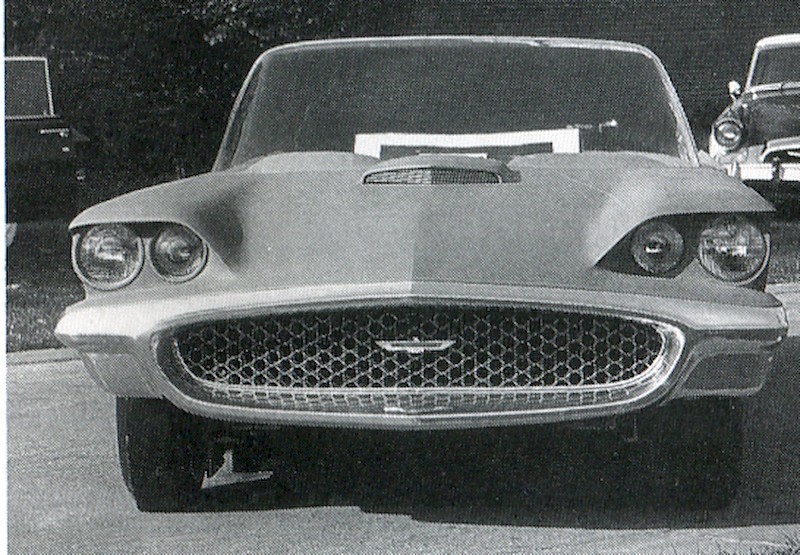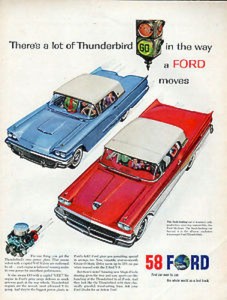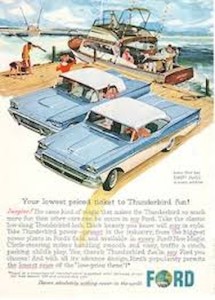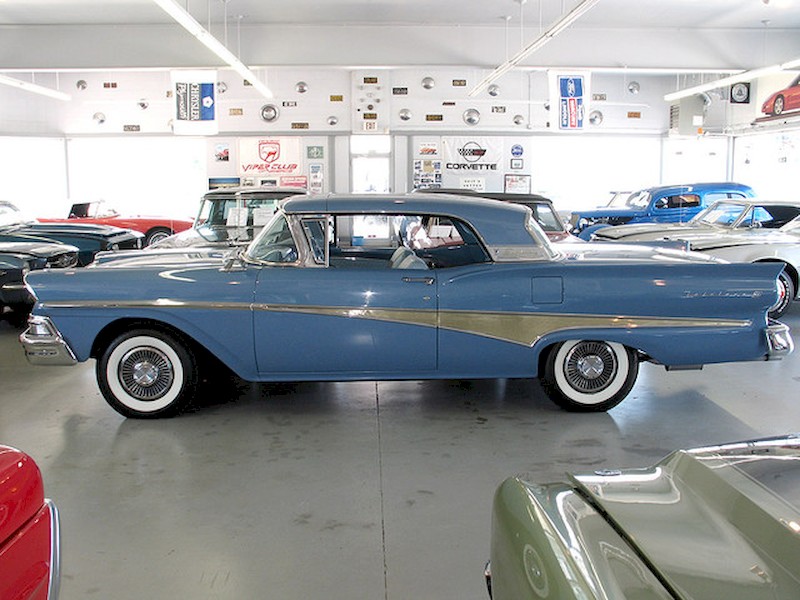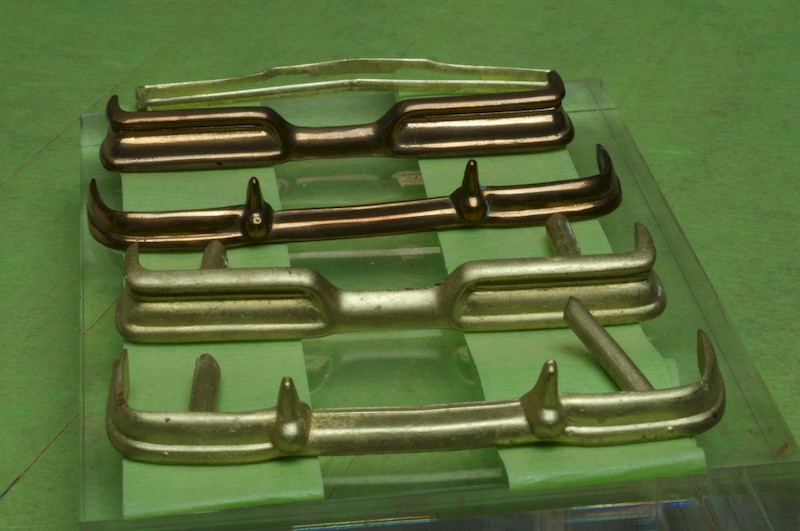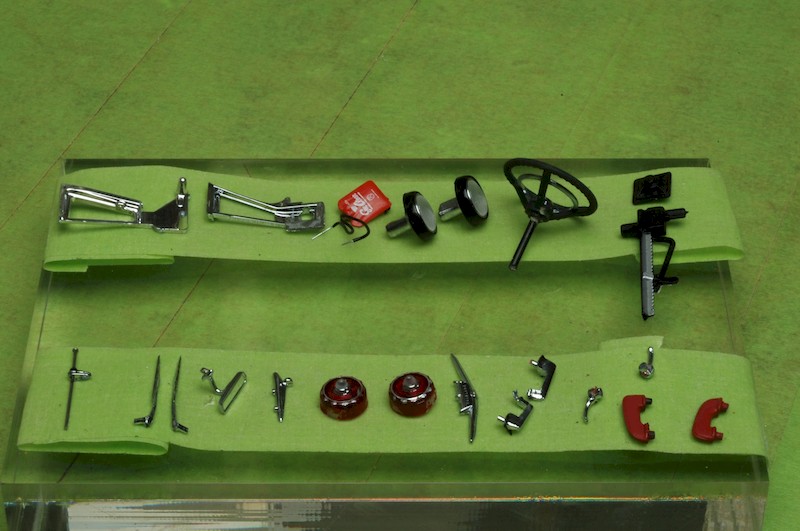The Victoria GT
The second ‘57 Victoria scale miniature I’ll be building will be of might have been a Ford design study that was proposed in 1955, that represented what at least one (fictional) styling team may have conceived of as a transition between the production 1957 Victoria and the revolutionary 1958 Ford Thunderbird. I’ve designed this car to represent a (re-) styled car featuring coachcraft design features that intentionally merges some Squarebird design elements into the stunning 1957 Ford basic design. For instance, we’re importing the recessed rear deck design from the Thunderbird (inexpertly and unpleasantly presented on the production ‘58 Ford) with that shape transversing the bottom line of the rear window and then separating the rear seats. A replica of the 1956-era styling factory concept T-Bird front bumper will be used because it is such a graceful design. Coupled with a ‘58 Bird hood scoop, and the use of a modified dash and seats from the same Thunderbird, I’ve designed what Ford didn’t do well enough in the era when it presented an campaign that drew obvious comparison between the Ford and Thunderbird: unlike Ford, this design will successfully exploit the design similarities between the first Squarebird and the stunning 1957 Ford. This design will also intentionally avoid the “Hollywood Customizing” motifs that did few favors for the custom car hobby.
This 1955-era design study front bumper design was an intermediate design step between the 1957 T-Bird grille/bumper design and the ‘58 bumper – the concept car style was better styled than both: this is the basic shape I’ve selected for the modified, phantom Vicky.
Though we’re not building a restyled ‘58 Ford, the intentional comparison between the first Squarebird and the ‘58 Ford couldn’t be more obvious, and the same basic body was shared by the ‘57 and ‘58 Ford coupes. Obviously, the ‘58 Ford front grille was incredibly inept.
In profile view the ‘58 Ford Skyliner retractable hardtop presented an obvious comparison to the Thunderbird.
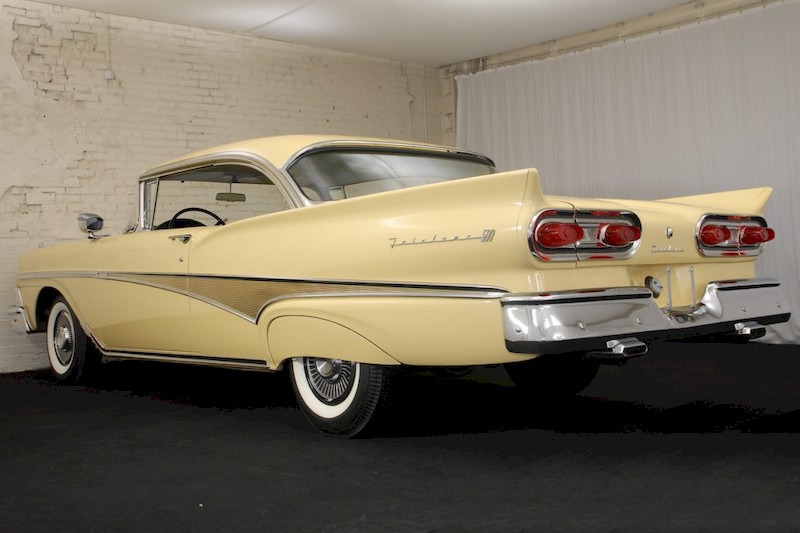
The most dramatic comparative element are the rear taillights on the ‘58 Ford. Though the taillights are unpleasant in shape, the T-Bird theme here is obvious. We’re going to retain the much better 1957 Ford lights and do a cohesive T-Bird design on the trunk.
As with the scale replica of the Jackson car, this restyled Vicky model will be constructed using the same assembly procedure used to build real cars but adapted to this car:
body bolted to a frame; bolt on brass doors/hood/front clip, the interior will be assembled through the door openings, and similar techniques. I was one of the builders to pioneer this technique with my Mercari – a phantom styling exercise of a hybrid Mercury-Ferrari; Essentially, if a 1:1 scale car can be built this way, so can a scale model (for the most part). Please check out this essay excerpted from a book on championship modeling that Bob Wick and I wrote in 2009 (thanks to Paul Anagnostopolous for laying out the book. Visit Paul’s website.)
It is my intention that the scale replica of the Jackson car (but featuring the blower engine), and the speculative/phantom Vicky design, will set a new standard for craftsmanship for 1/25 scale models. The twin models will be built to a standard much higher than I could ever have imagined in 1978. Similarly, the Vicky slot car will also explore fresher territory than before. A central goal to this project is to push the boundaries to see how exquisite scale miniature models can be whether a factory stock model, or a miniature of a restyled, 1957 Club Vicky. To do that, I will scratch build, or source from other craftsmen, the best parts:
I’ve retained the services of Bob Wick, a noted commercial artist and illustrator, to create the artwork for several dozen photoetched parts as well as producing the incredible artwork found on this site. Here’s the initial list of photoetched parts that we’ll be doing.
The frame will be resin-cast and then I’ll send that frame to a jeweler to be “lost-wax” cast in brass. In the alternative, Bob Wick and I will create brass photoetched brass parts that I’ll solder together to create the frame. A brass frame will produce a solid foundation for these models.
For the replica model, I’ve already had the AMT kit bumpers (once corrections were made) cast in brass. I’m in the process of polishing them now for cobalt plating.
I’ve modified original AMT bumpers and had then investment cast in brass, along with the front grille surround. I’ve started to polish the best-of-the-lot front and rear bumpers. Much more work needs to occur before these parts can be cobalt plated.
For the restyled Vicky, we’ll be using a modified 1958 rear bumper piece with the center incut removed, and with subtle reveals cut into the upper and lower parts of the bumper.
I’ll make use of a limited number of parts from the Danbury Mint diecast ‘57 Skyliner;
A discarded Danbury Mint model of the 1957 Ford Skyliner yielded these parts after a lot of careful work to retrieve these parts without breaking them. Seen here (starting at the top), we’ve retrieved those great vent window assemblies, a “See Clear” windshield washer bag, windshield wiper arms, door handles and arm rests. These are great parts and will be freely used (though we may have some better taillights turned).
The restyled Vicky will feature aesthetic changes that will reflect a “coach building” approach to body (and mechanical) modifications in place of the vulgar “Barris-style” of customizing. Here’s a sample of the changes to the body: a ‘58 T-Bird hood scoop will be fitted to a hood that would have been crafted from sheet stock, the trunk will be treated to an insert that will transverse the rear window (influenced by the ‘58 Thunderbird) and that will host the license plate that will sit behind a clear glass cover, fluted headlight bezels hosting recessed lenses, raised rear wheel well sheet metal, and other details.
My scale miniature of this phantom concept car design study be built to the highest standard I can accomplish. I’m aware of my own mortality at age 63, and I want to make a “statement” about what the best work in 1/25 scale can be like. As one of several champions of high-effort building, it’s appropriate for me to demonstrate my own abilities to support my long-time advocacy of advanced building techniques and craftsmanship. It’s my hope to push every possible “boundary” in this model.
Please note the anticipated details of the faux “concept car” Vicky model:
To best tell the “story” of this faux concept car study, the team and I will create ephemera to flesh out the acknowledged faux history of this scale miniature of a car that never was: digitalized styling studio photos depicting a “clay” of the car under development, the finished car presented in a diorama of the Ford Styling Studio, printed promotional materials (color publicity sheet, brochures, drawings, etc.), a diorama of an upper tier Fifties car show (probably Oakland where the car was privately campaigned by the Ford engineer who personally funded the car), and the like. This is going to be fun!

